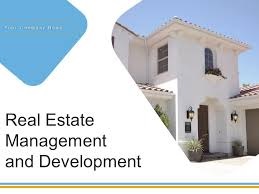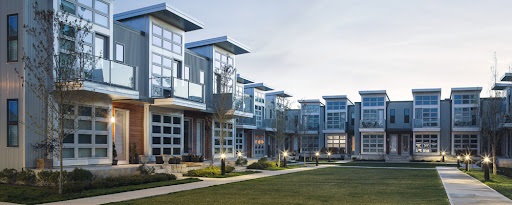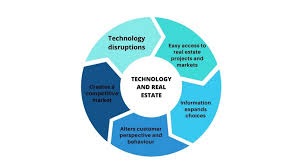Real Estate Development and Management is a multifaceted field that encompasses the processes of planning, designing, financing, constructing, and operating real estate properties. This domain includes a wide range of activities, from residential housing projects to commercial complexes and industrial facilities. Below is an extensive overview of the key components and considerations in real estate development and management.
1. Introduction to Real Estate Development

Real estate development involves the creation of new properties or the renovation and re-purposing of existing ones. It is a complex process that requires a deep understanding of market dynamics, regulatory environments, financial mechanisms, and construction technologies.
2. Phases of Real Estate Development
A. Pre-Development Phase
- Market Research and Feasibility Studies: Assessing the demand for specific types of real estate and the economic viability of potential projects.
- Site Selection and Acquisition: Identifying and purchasing suitable land or properties for development.
- Zoning and Land Use Approvals: Navigating local zoning laws and obtaining necessary permits and approvals from regulatory bodies.
B. Development Phase
- Design and Planning: Collaborating with architects, engineers, and urban planners to create detailed project plans.
- Financing: Securing funding through loans, equity investments, or other financial instruments.
- Construction: Overseeing the building process, including hiring contractors, managing schedules, and ensuring quality control.
C. Post-Development Phase
- Marketing and Sales: Promoting the property to potential buyers or tenants.
- Property Management: Handling the ongoing operations of the property, including maintenance, tenant relations, and lease management.
3. Key Players in Real Estate Development
- Developers: Individuals or companies responsible for initiating and managing development projects.
- Investors and Financiers: Entities that provide the capital needed for development, including banks, private equity firms, and individual investors.
- Architects and Engineers: Professionals who design the physical aspects of the property.
- Contractors and Builders: Companies that carry out the construction work.
- Property Managers: Firms or individuals responsible for the day-to-day operations and maintenance of the property.
4. Types of Real Estate Development

- Residential Development: Includes single-family homes, multi-family units, apartments, and condominiums.
- Commercial Development: Encompasses office buildings, retail centers, hotels, and mixed-use developments.
- Industrial Development: Involves warehouses, factories, and distribution centers.
- Specialty Development: Includes hospitals, schools, recreational facilities, and other specialized properties.
5. Real Estate Management
A. Property Management

- Tenant Relations: Ensuring tenant satisfaction through effective communication and problem resolution.
- Lease Administration: Managing lease agreements, renewals, and terminations.
- Maintenance and Repairs: Regular upkeep of the property to ensure safety, functionality, and aesthetics.
- Financial Management: Budgeting, rent collection, and financial reporting to stakeholders.
B. Asset Management
- Portfolio Management: Overseeing a portfolio of properties to maximize overall returns.
- Performance Analysis: Monitoring the financial performance of properties and making strategic adjustments.
- Value-Add Strategies: Implementing improvements and upgrades to increase property value and income potential.
6. Challenges in Real Estate Development and Management
- Economic Cycles: Real estate markets are influenced by broader economic conditions, which can impact demand, financing, and profitability.
- Regulatory Compliance: Navigating complex zoning laws, building codes, and environmental regulations.
- Market Competition: Staying competitive in a crowded market by offering unique and desirable properties.
- Sustainability: Incorporating green building practices and energy-efficient technologies to meet regulatory requirements and market demand.
7. Trends in Real Estate Development and Management

- Technology Integration: Using software and digital tools for project management, marketing, and property operations.
- Sustainable Development: Emphasizing eco-friendly practices and sustainable design in new developments.
- Urbanization: Developing properties in urban centers to meet the growing demand for housing and commercial space in cities.
- Mixed-Use Developments: Creating versatile properties that combine residential, commercial, and recreational spaces.
8. Conclusion
Real estate development and management is a dynamic field that requires a blend of creativity, strategic planning, financial acumen, and operational expertise. Successful developers and managers must stay abreast of market trends, regulatory changes, and technological advancements to create and maintain properties that meet the needs of their clients and provide sustainable returns on investment.



